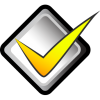IBM released the latest version of Collaborative Lifecycle Management (CLM) 6.0.3 a few weeks ago. As always, I like to go over the highlights.
DOORS Next Generation 6.0.3
This release feels a bit more focused as far as improvements go. If you’ve opted in to Configuration Management, you’ll notice that there is now support for components, allowing you to more easily setup your projects for CM. You’ll no longer need a separate DNG project area for each system your needs, but rather you can create one DNG project and then define components of that project.
If that sounds confusing, worry not, as I’ll be covering components in detail very soon.
You’ll also notice that navigation has been streamlined. In previous versions of DNG, there was an Artifacts menu and a Modules menu. Now there is just an Artifacts menu and it can be filtered to just display modules. And filtering is a bit easier.
ReqIF has also been enhanced, especially for those of you migrating from DOORS 9. For DOORS 9 users, you can know map Object Type to Artifact Type for everything except modules. This is YUGE. It’s such a big deal that I used one of the 603 milestone releases to test it out and actually found a bug that development fixed before release. This functionality can be enhanced to be sure, but I’m just very glad that it’s finally there.
The diagram editor now allows for UI diagramming. Things like menu bars, sliders, radio buttons, etc.
With 6.0.3, DNG users can link across projects.
There have also been miscellaneous improvements that have not been called out explicitly by IBM. One that I noticed, directly from one of my clients is this: In DNG, when working in a module and pressing control-enter to create a new requirement, there was a 2-3 second delay while the old requirement was being saved. During this delay, the user could not write their new requirement. They had to wait for the 3 seconds and then they could write. This tiny thing was fixed, and it really does make the tool feel faster, especially for those of us who heavily use keyboard shortcuts.
Rational Quality Manager 6.0.3
RQM 6.0.3 also supports components.
RQM 6.0.3 now features global categories! You can also make certain categories apply to multiple artifact types.
RQM also now has a compare artifacts feature, and along with version history, it’s pretty jazzy (no pun intended) if I do say so myself.
You can now link RQM artifacts directly to files source controlled in RTC! I haven’t tested this yet but I’m glad the functionality to link to files is finally there.
RQM 6.0.3 now supports drag and drop linking and better artifact navigation.
Rational Team Concert 6.0.3
Lots of tweaks for builds are in RTC 6.0.3. Log files can now be filtered (ie, show me logs with errors), timestamps can be preserved on load and improved Jenkins compatibility. Build engine definitions can now be imported and exported.
The Eclipse thick client now requires Eclipse 4.2. Eclipse 3.6 is no longer supported.
The Visual Studio plugin now supports task editing.
Files in SCM can be linked to other CLM artifacts, as mentioned above in the RQM section.
A pending changes view has been added to the Windows RTC shell.
Git integration now supports work items with a hashtag keyword. So you could say, “This changeset addresses task #786” and the integration will know what you’re talking about.
You can more easily display all changesets implemented during a given release.
There’s undo merge functionality.
Jazz Report Builder 6.0.3
Here’s the big one on this release: You can trace multiple relationships from the same artifact.
The displayed columns of a report can now be rearranged via drag and drop. Column widths can also be set and be sticky.
A report can now have multiple owners set.
There’s a new “tour” guide for new users.
Dialog boxes are now resizable.
Types and attributes now have a pop-up tooltip type help system.
You can filter on multiple text values when a report is run.
The order of the legend in the graph can now be set.
Users can filter report via component (via LQE).
There really is much more, including new trend reports, new SCM file reporting capability, curved trend lines among others.

